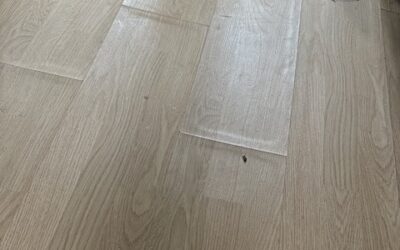THE INSTALLATION METHODS
There are two methods used to install wood flooring; you can ‘float’ the planks so they sit on top of an acoustic underlay, without any glue being used, or alternatively you can glue the wood flooring down to the existing sub-floor.
It is possible to either float or glue-down wood flooring to the following: existing wood flooring, particleboard, plywood, concrete, old ceramic tiles and old vinyl flooring. Laminate flooring must only be installed using the floating method.
Glue Down Installation
Main Advantages:
– Best for acoustic performance, especially for reducing ‘footfall sound’ in the actual room you are walking in.
– Deals with minor sub-floor unevenness better than a floating floor.
– Visually more appealing as smaller size trims can be used between the wood and other floor coverings, such as a tile angle.
– No trims are required against window or slider joinery.
– Best method for underfloor heating as it ensures better transfer of heat to the floor surface.
– ‘Solid’ feel underfoot.
Disadvantages
– Costs more than a floating installation due to higher labour costs and adhesive cost.
– More time-consuming compared to a floating installation.
Floating Installation
Main Advantages:
– Suitable for DIY installation.
– Quickest and most cost effective installation.
– Good at reducing sound transfer to rooms underneath.
Disadvantages:
– Many poor quality underlay’s do not address the typical ‘drummy’ sound of floating floors.
– Larger trims are required to finish between your wood floor and other floor coverings. These trims are designed to hold the floor down & allow expansion (trims are about 17mm wide).
– Aluminium trims are also required up against floor level window joinery & slider joinery; to hold the floor down in those areas.
– Poor quality wood flooring can squeak when installed floating – especially if the click-lock mechanism is not licensed. It should always be a genuine Uniclic or Valinge click-system.
– The sub-floor must be very level for a floating type of installation.
CONCLUSION
If you can afford it then we recommend that you glue your timber flooring down for a premium result. If you decide to float your timber flooring then the quality of the underlay is paramount; we recommend European made underlay such as Selit Aquastop with a high impact sound reduction rating and good compressive strength.


